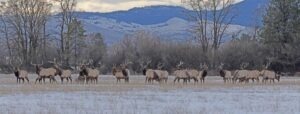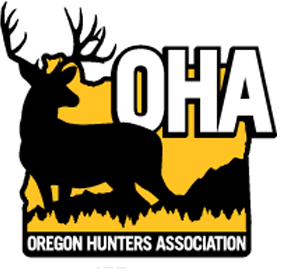 By Mike Totey, Conservation Director
By Mike Totey, Conservation Director
OHA and our allies are organizing opposition to proposed National Forest management plans for the Blue Mountains that fall well short of providing for abundant deer and elk populations.
In 2023, the US Forest Service announced it would be updating the forest management plans for the three national forests in northeast Oregon. The Umatilla National Forest, Malheur National Forest, and Wallowa-Whitman National Forest are all included in a project titled “The Blue Mountains Forest Plan Revision.” These national forests total 5.5 million acres of public lands that are critical for elk, deer, and numerous other species.
OHA has been looking forward to this process for some time, because these are some of our most valuable game habitat and hunting areas in the state. Unfortunately, the “Preliminary Draft Proposed Malheur, Umatilla, and Wallowa-Whitman National Forest Land Management Plans” fall short on many of the critical aspects needed to promote and sustain healthy elk, deer, and other game populations, and they do virtually nothing to promote one of the most prominent recreational uses on the forests: hunting.
The draft plans don’t even include wildlife as a component of the plans. Hunting is barely mentioned.
One of the few references to providing anything for elk states “Utilize vegetation management and other activities to improve distribution of elk and encourage elk to remain on public lands.” OHA can support this statement for a variety of reasons, not the least of which is minimizing damage to surrounding private lands. However, this same statement was a key factor for OHA’s objection to a recent Forest Service project that stated the same intent, but then deliberately chose not to implement the actions that would encourage elk to remain on public lands.
OHA and numerous partners are joining forces to get our priorities heard to include critical components like elk security cover, fawning and calving area protection, and forage availability and production. Working through this process for any one forest is complex and difficult. Attempting to cover multiple national forests in one revision process adds to the complexity.
